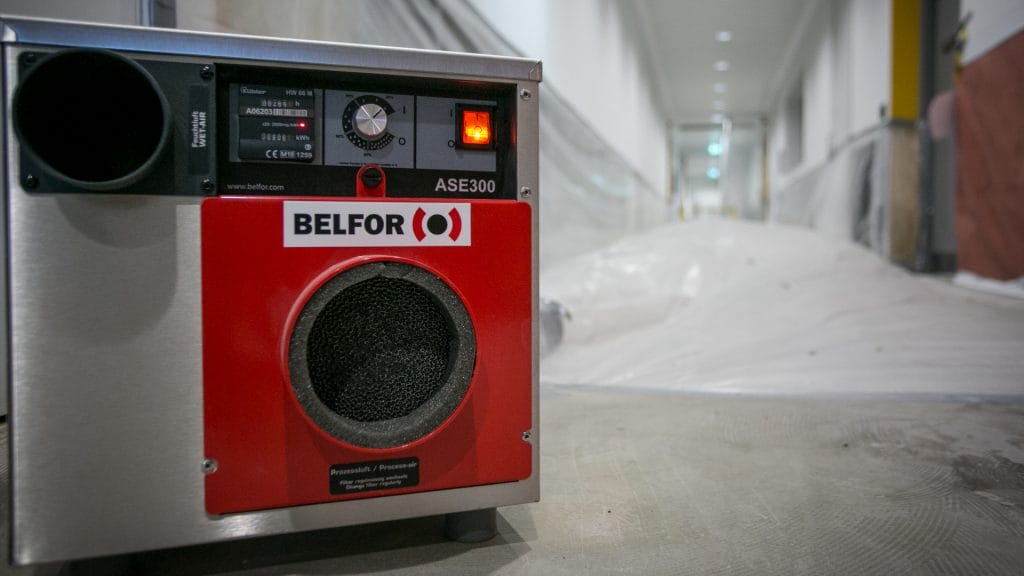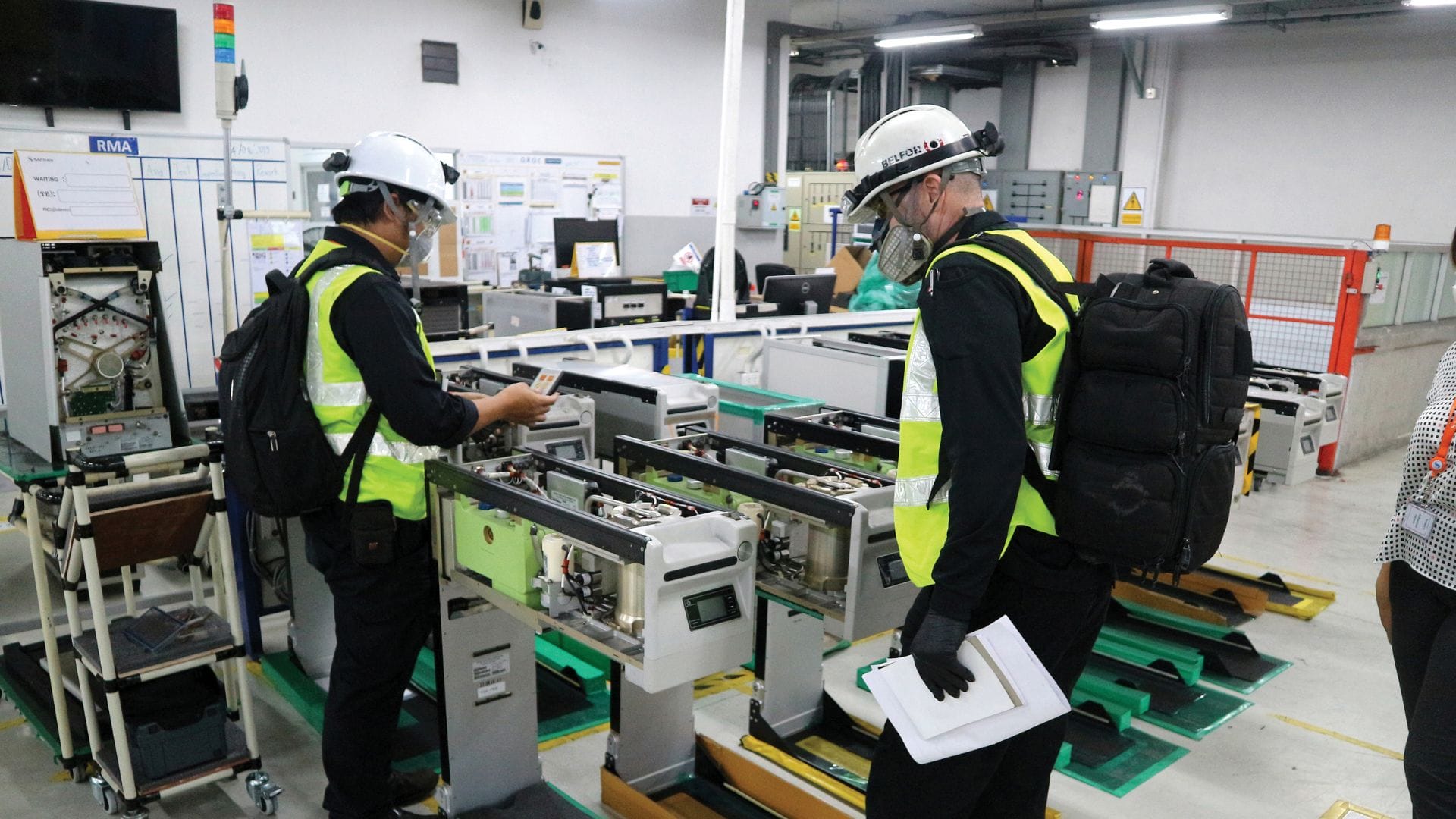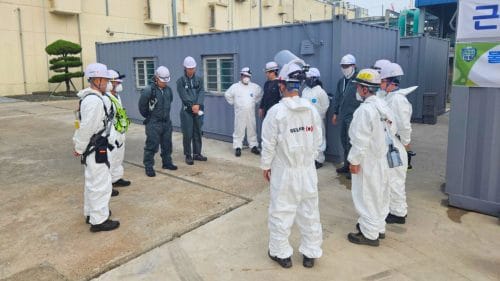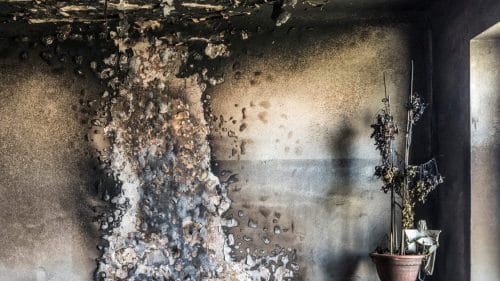From Incident to Recovery: The Complete Disaster Restoration Lifecycle for Businesses

Key Takeaways:
- A structured approach to recovery ensures that businesses can stabilise operations quickly after an unexpected incident.
- Early actions such as inspection and mitigation are critical to preventing further damage and safeguarding valuable assets.
- Comprehensive documentation supports insurance claims and provides transparency throughout the recovery process.
- Partnering with an experienced recovery specialist gives organisations the confidence to resume operations efficiently and sustainably.
Introduction
Disasters, whether natural or man-made, can occur with little warning and leave businesses facing immediate, complex challenges. The consequences are often severe, ranging from structural damage and disrupted supply chains to lasting reputational impact. In interconnected markets in Asia, even brief periods of downtime can escalate into significant financial losses and erode customer confidence.
When disruption occurs, the speed and effectiveness of the response are critical. A structured restoration process limits operational downtime, protects employees and stakeholders, and helps organisations meet regulatory and operational requirements during recovery. Establishing a clear disaster recovery lifecycle allows companies to move systematically from initial emergency response through to long-term restoration, ensuring continuity and resilience in the face of disruption.
Businesses also face specific risks such as contamination, corrosion, and microbial growth. Targeted decontamination, including commercial mould removal, help prevent secondary damage and stabilise the environment while broader recovery measures are underway. These steps ensure that valuable assets are protected and future risks are minimised.
In this guide, we will examine the complete disaster recovery lifecycle for businesses, outlining the critical stages that transform an unexpected incident into a structured path toward a successful recovery.
Site Inspection: How Does the Recovery Process Begin?
Every disaster recovery lifecycle begins with a structured site inspection. This initial stage establishes a clear understanding of the extent of damage and the risks that could impact both immediate safety and long-term business continuity. Without a thorough assessment, critical issues such as contamination, corrosion, or structural instability may go undetected, creating further complications during the restoration process.
The process typically starts with BELFOR arriving on-site and meeting stakeholders to align expectations and outline the next steps. Clear communication is vital at this stage, as facility managers and business owners need to understand the scope of actions to be taken and the speed at which recovery can begin. Collecting relevant information, such as floor plans, equipment layouts, and asset inventories, enables the BELFOR team to identify priorities and highlight areas that require urgent intervention.
An initial walkaround of the premises provides valuable context and helps distinguish recoverable assets from those that are beyond restoration. Beyond visual checks, BELFOR conducts technical inspections using Quick Test samples, which are designed to detect contaminants and identify risks of further deterioration, including corrosion and electrical hazards. This initial inspection is particularly critical in industrial and commercial environments, where hidden damage may not be immediately visible.
Where results point to an escalation risk, BELFOR implements immediate Loss Mitigation measures. This can involve isolating affected areas, implementing temporary containment, or applying early-stage contamination control methods to minimise secondary damage. In cases such as flood damage restoration, early Loss Mitigation prevents further spread of moisture and contaminants, protecting both equipment and the building.
The site inspection is not simply about identifying visible damage; it sets the foundation for the entire disaster recovery lifecycle. By establishing a clear baseline of risks, priorities, and recommended actions, BELFOR ensures that the recovery process is managed systematically and with confidence, moving the disaster recovery lifecycle forward in a reliable way.
Loss Mitigation: How Are Immediate Risks Contained?
Once the initial site inspection has been completed, the next step in the disaster recovery lifecycle is loss mitigation. This stage, led by BELFOR specialists, focuses on protecting equipment and facilities that remain potentially recoverable. The objective is not to carry out full restoration yet, but to control the environment, prevent secondary damage, and preserve assets until detailed recovery work can begin.
Loss mitigation begins with environmental control. One of the most common threats following a disaster is elevated relative humidity (RH), which can accelerate corrosion and promote mould growth if left unchecked. By regulating RH levels, BELFOR creates conditions that slow deterioration and gives time to plan for restoration activities. In situations such as storm restoration, effective humidity control is especially important to prevent long-term damage.
Attention is also directed toward surface-level contaminants. Equipment and infrastructure exposed to corrosive agents, such as chlorides, soot particles, or other residues, require immediate treatment to prevent damage. Wiping down and pre-cleaning equipment surfaces helps neutralise these substances and limit their damaging effects. This step is particularly critical for metallic components, which are highly vulnerable to chloride-induced corrosion.
To further strengthen protection, BELFOR applies surface-protection compounds to metallic surfaces. These compounds act as a temporary barrier, halting the chemical reactions that trigger corrosion. By implementing these measures promptly, BELFOR ensures that valuable assets are preserved for full-scale restoration rather than being written off prematurely.
Loss mitigation can also involve broader emergency decontamination services. If contaminants are widespread or hazardous, BELFOR conducts targeted interventions to mitigate risks to both people and equipment. These measures also complement other tasks, such as water damage cleaning, where immediate action prevents secondary deterioration and safeguards the working environment.
By focusing on what is recoverable and stabilising those assets early, the loss mitigation stage provides a vital link in the disaster recovery lifecycle. It bridges the gap between emergency response and detailed restoration. By embedding protective steps at this stage, businesses reinforce their position within the broader disaster recovery lifecycle, ensuring that subsequent recovery phases can be carried out more effectively and at lower cost.
Damage Assessment: How Is the Extent of Recovery Determined?
While loss mitigation measures are underway, the disaster recovery lifecycle continues with a structured damage assessment. At this stage, BELFOR evaluates the technical viability of restoring equipment and infrastructure, as well as estimating the financial and resource requirements needed for full recovery.
A detailed assessment begins with a close analysis of each affected asset. BELFOR examines whether restoration is practical, taking into account the condition of the equipment, the level of contamination, and the potential for long-term reliability after recovery. This ensures that businesses make informed decisions about which assets are worth investing in and which should be replaced or upgraded.
All findings are systematically documented in a comprehensive report. The report captures the type and extent of damage, identifies the associated risks, and provides clear recommendations on the most suitable recovery strategies. BELFOR’s documentation not only serves as a roadmap for restoration but also provides stakeholders and insurers with transparent records to support claims and decision-making.
Cost considerations are addressed through detailed estimations or quotations for required decontamination services. Where microbial growth is identified, targeted measures such as mould remediation may also be included in the plan. By presenting clear financial outlines, BELFOR enables businesses to weigh the value of restoration against replacement, ensuring that resources are directed where they will have the most significant impact.
Finally, BELFOR prepares a tailored restoration timeline. This schedule takes into account the availability of resources, the complexity of required tasks, and the dependencies between different recovery stages. Establishing a clear timetable enables stakeholders to plan business continuity measures, manage employee expectations, and coordinate with supply chain partners effectively.
The damage assessment stage represents more than an evaluation of current conditions; it is a critical step within the disaster recovery lifecycle. By aligning technical feasibility, cost, and time, it provides businesses with a clear picture of what recovery will entail. This clarity ensures that decisions are made strategically and that the broader disaster recovery lifecycle progresses with efficiency and confidence.

Decontamination and Restoration: How Is Equipment Brought Back to Operational Standards?
After inspection, loss mitigation, and damage assessment have been completed, the disaster recovery lifecycle advances to the decontamination and restoration stage. This is the point where planned strategies move into action, with BELFOR carrying out the agreed recovery measures on assets identified as technically and financially viable for restoration.
Decontamination begins with the systematic cleaning of affected equipment, facilities, and surfaces. BELFOR follows the findings in the technical report, particularly its appendix, which details asset conditions and tailored recommendations. This structured framework ensures that every step remains consistent, transparent, and aligned with the agreed scope of work. Targeted actions such as indoor air quality assessments and bio-decontamination services may also be performed to ensure the environment is safe for employees and compliant with health standards.
Specialist hazardous material cleaning methods are often required where contaminants such as soot, corrosive deposits, or chemical residues are present. BELFOR applies these techniques not only to remove visible damage but also to neutralise harmful substances that could undermine long-term equipment reliability or pose health and safety risks. In incidents involving fire and smoke damage restoration, such measures are particularly critical to prevent further deterioration of sensitive machinery and to protect workplace safety.
Once contaminants are eliminated, BELFOR proceeds with restoration to repair and stabilise affected assets. Depending on the severity of damage, this may involve mechanical adjustments, electrical testing, recalibration, or reconditioning of complex systems. In large-scale cases, BELFOR deploys full industrial recovery solutions to restore production lines or critical infrastructure, reducing the need for costly replacements and accelerating operational readiness.
Throughout this process, BELFOR documents every step to verify compliance with industry standards, reassure stakeholders, and provide evidence for insurance or regulatory requirements.
By combining technical knowledge with proven recovery practices, the decontamination and restoration stage transforms damaged equipment from a liability into an asset once again, making it fit for use. This phase marks a turning point in the disaster recovery lifecycle, helping businesses progress from stabilisation to operational recovery. By having a systematic approach throughout the stages, the disaster recovery lifecycle moves forward with efficiency, safety, and confidence.
Handover: How Is Restored Equipment Returned to the Business?
The final stage of the disaster recovery lifecycle is the handover, where BELFOR formally returns restored assets to the business for testing and commissioning. This step represents the culmination of the restoration process, confirming that equipment and facilities are safe, functional, and ready to be reintegrated into daily operations.
Handover is carried out collaboratively, involving the Original Equipment Manufacturer (OEM), relevant service providers, or the client’s appointed representatives. BELFOR will witness the test and commission of the equipment, to ensure that it can address any problems that may arise as a result of the restoration, during such activities. This joint approach guarantees both technical accuracy and stakeholder confidence in the restored assets.
Where required, the OEM sources and supplies spare parts to complete the recovery process. This ensures that components compromised beyond repair are replaced with manufacturer-approved parts, thereby reducing the risk of premature failure and extending the long-term reliability of the equipment.
The handover process is also supported by detailed documentation, providing businesses with a clear record of restoration activities, testing protocols, and commissioning outcomes. These records serve as essential references for future maintenance planning, audits, and compliance verification.
In some cases, BELFOR also applies additional site remediation techniques at this stage to ensure the broader environment is free from contaminants and safe for employees to re-enter. This strengthens the sustainability of recovery efforts, ensuring that operations resume without hidden risks.
By the time handover is completed, businesses gain assurance that their critical assets have been fully restored and verified for reliable use. This marks the close of the immediate recovery effort and signals a successful transition to stable, ongoing operations within the wider disaster recovery lifecycle. With this final step, the disaster recovery lifecycle provides a comprehensive framework that enables organisations to transition from incident response to long-term resilience.

Questions You Might Have
1. How quickly can BELFOR respond in the event of a disaster?
Response times vary depending on the location of the incident and the type of disaster involved. In most cases, BELFOR can mobilise resources and be on-site within 12 to 48 hours. A rapid response ensures that critical steps such as inspection, loss mitigation, and environmental control begin immediately, reducing the risk of secondary damage and shortening the overall recovery timeline.
2. What types of businesses does BELFOR work with?
BELFOR has extensive experience supporting a diverse range of industries, including manufacturing, power generation and distribution, petrochemicals, semiconductors, transportation, and commercial real estate. From large-scale production facilities to specialised industrial plants, BELFOR provides tailored solutions that address the unique operational requirements of each sector. Whether restoring buildings, machinery, or sensitive equipment, the goal is always to minimise downtime and enable businesses to resume operations quickly.
3. How does BELFOR assist with insurance claims?
In the aftermath of a disaster, accurate documentation is often essential for processing insurance claims. BELFOR prepares detailed damage reports and maintains thorough records of inspections, mitigation steps, and restoration work carried out. These documents provide insurers with clear, verifiable evidence of the damage and recovery measures taken. By streamlining the claims process, BELFOR helps businesses secure financial reimbursement efficiently, reinforcing resilience throughout the disaster recovery lifecycle.
Conclusion
Disaster recovery is more than cleaning up the aftermath; it is about restoring business continuity, protecting critical assets, and ensuring that operations can resume as quickly and safely as possible. For companies, the ability to act swiftly can make the difference between a short interruption and a long-term disruption. By responding with precision and efficiency, BELFOR helps businesses reduce the risks of prolonged downtime and avoid the compounding losses that often follow a disaster.
From immediate response and emergency decontamination services to long-term strategies such as site remediation and equipment restoration, BELFOR delivers end-to-end support throughout the entire disaster recovery lifecycle. This comprehensive approach ensures that every stage, from inspection to handover, is managed with technical expertise and clear communication.
With decades of experience and a deep understanding of industry-specific recovery needs, BELFOR provides businesses with the assurance that decisions are being made in a timely and well-informed manner. By focusing on both the urgent and long-term aspects of recovery, companies can redirect their energy toward stabilising operations, supporting employees, and rebuilding client trust.
If your organisation is seeking a trusted partner to guide you through the disaster recovery lifecycle, contact BELFOR today. Our specialists are prepared to respond swiftly, helping you move from incident to recovery with confidence.


